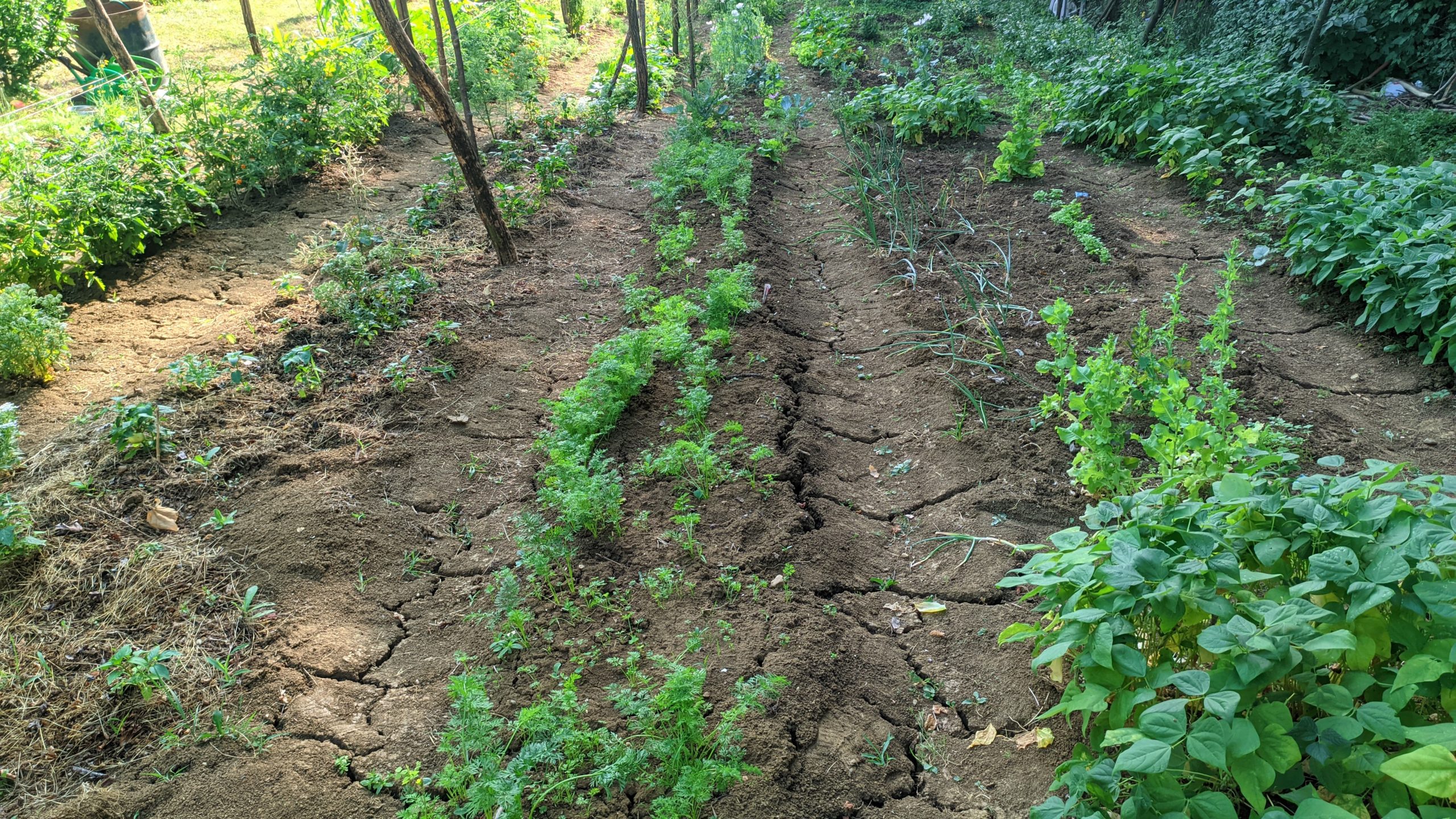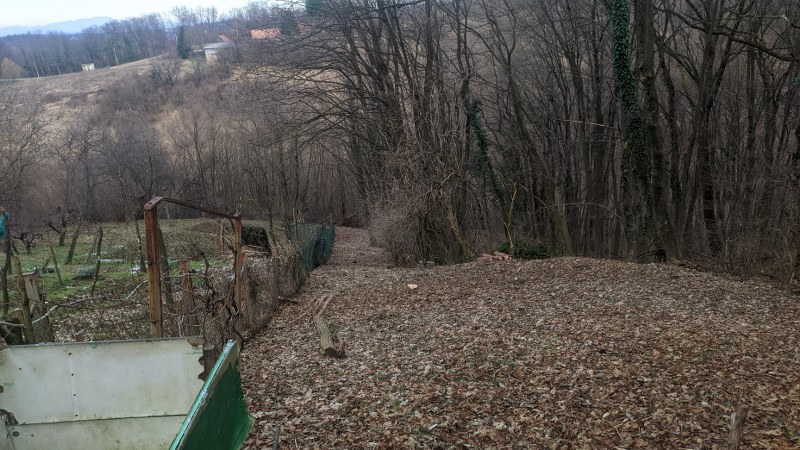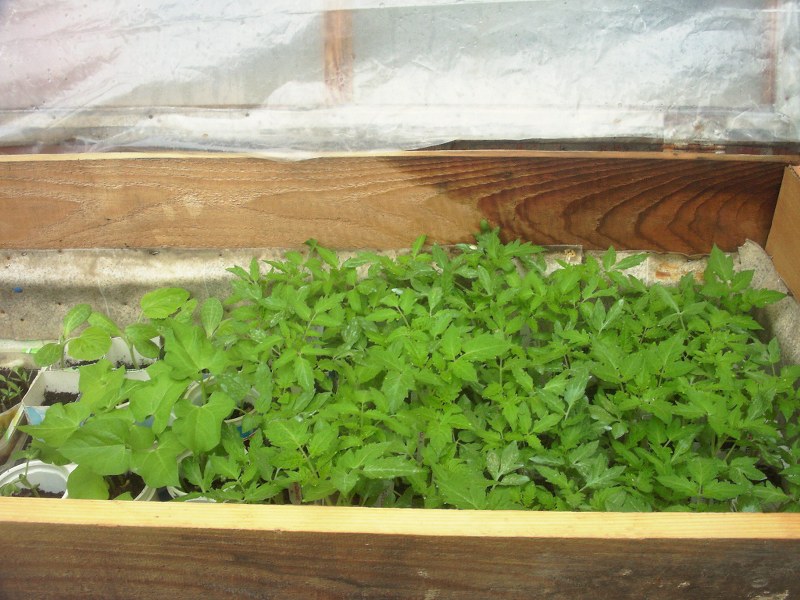Most garden plants like to grow in rich soil full of organic materials. That’s why we gardeners buy sowing compost and start our seeds in almost perfect conditions. We transplant our plants into our clay-rich gardens pamper the plants and expect them to give us an abundant harvest. But then the summer comes, and we start realizing that the soil in the garden is cracking up. Why is this happening? What is the solution? And how can we prevent this?

To know the answer, we first need to know our clay soil well.
What is clay soil?
Clay soil is a type of soil rich in fine clay particles, lacks organic materials, and can be very rich in nutrients. The dense soil particles make this type of soil very thick and firm. The particles act like a sponge. Absorbing water which then drains very slowly, but when it’s exposed to heat, it will drain excellent and form a firm surface. This is why clay is used to make bricks, dishes, and pottery.
Clay soil will easily stick to the shoes when wet, making it almost impossible to walk. It is almost like glue. Sticking more particles on top of another. Soon you’ll carry around a mass that’s sticky, heavy, and won’t come off. When you do manage to take it off the shoes and squeeze it in your hands, you will be able to make a ball or a cylinder without any problem. If you knead the soil long enough it will become shiny.
Opposite of when wet, clay when dry, will start shrinking and soon start cracking up. The cracks will become wider with time, and often you’ll be able to stick a whole palm inside the crack.

The clay soil in the garden
Having something that cracks and sticks in the garden certainly isn’t fun or easy to work with. Clay gardens are usually in much bigger need of sun than gardens with other types of soil. Clay retains water, and its thickness makes it difficult for the soil to heat up. The summer sun often isn’t enough to heat the soil so it will stay cold and wet longer than in other soil types. Also, clay soil needs constant digging and aerating. When left unattended after the last harvest, especially during winters with heavy snow, it will compact so much that in spring it will be like a concrete slab.
Planting in clay soil can be difficult, especially for plants with delicate roots. The dense soil will kill the plants, not allowing them to spread roots, and suffocating them. But, as terrible as it sounds, this is sometimes a good thing. The same dense soil will stick around bigger roots letting the already grown plants root easier and without much care. Watering the transplanted plants only once right after the transplanting will be enough for our roses, fruits, bushes, and berries to root in.
Summer in the clay garden
Summers in clay gardens are much more difficult than in other types of soil. As I said before, the clay soil tends to shrink when dry. If the dry period continues for too long, the shrinkage can be so severe that the soil starts to crack up. This can affect our plants greatly, especially if the cracks are right under the plant. The roots will become exposed and the plant will dry up and die. Big cracks can knock down big old trees and even disrupt the foundations of the buildings.
Cracks in a sloping garden
Cracks in a sloping garden are even a bigger problem. Slope garden tends to take down the water. That’s why during the summer the amount of water needed to prevent the cracks is twice bigger than in the flat garden. Cracks will form much easier, especially if the garden is exposed to the sun during the whole day. Even when the rain falls, if it is too heavy, the cracks will help the water to move the soil down the slope and wash out the plants.
My garden is on a significant slope, and I’ve been dealing with the cracking problem every summer. Summers in Croatia are hot and droughty. Especially in our part of the country. Due to our microclimate, we tend to have extremes in rainfall. If the rain comes from the north, east, or west we’re likely to be missed and stay completely dry. If the rain comes from the south it tends to get stuck over us and falls for days.
The past couple of years has been extremely dry. We go for weeks without rain and even if we get some the amount is minor. The temperatures, on the other hand, are very high. During the past 60 days(mid-May to July) we had 40 days with temperatures above 30°C/86°F. Of course, during these 40 days, there hasn’t been a single drop of rain, so the remaining 20 days were not enough to keep the soil watered. Especially since most of their 20 rainy days were in May. The Garden is full of cracks and completely dry.
Dealing with clay cracking issues
Dealing with cracks in a clay garden depends very much on the location of the cracks. If the crack is located on the bed you can help your plants by adding a layer of organic materials, mulch, dry old plants, bark, pine needles, anything, and everything will be helpful, as long as the added materials are healthy. The organic materials can be mixed into a top layer of soil or just spread on the top of the bed. Both ways will work.

Watering will help the plants and the soil to stay moist enough and not start cracking. No matter which kind of water you use, or if you water with cans or hose, always water in the late evening. This will give the soil the time to stay wet and absorb well the given water.

Aerating the soil will help with already existing cracks. All of these methods won’t do much if the cracks are already here. The soil needs to breathe to absorb water, Clay soil when dry is hard, and all the water or materials you add to it will stay on the surface without any effect. The water will just stand there until it finds a way to run from the bed. Aerating will help the soil to absorb water. No matter which tool you use, everything will help. You can also just use your garden hoe like you would use it to remove the weeds. Digging the parts around the vegetables will be enough to prevent the soil from cracking.


If the cracks are on the lawn or paths then there’s not much choice but to aerate and water. The soil on the path usually cracks even easier so it will need more care. Break the bigger chunks of cracked soil and water.
Extra tips for cracks on a sloped garden
Slope garden paths are particularly hard to protect from the cracks. We can’t cover the paths with anything or water them because of the terrain. The added materials on slope paths increase the danger of slipping and watering the paths on the slope is just wasting water. You can never pour enough water on the path. The smooth surface will just let the water drain like in the drainage pipe.
What I do is fill the cracks with extra bed soil. Slope gardens always have extra soil on the border of the beds, I use this soil to fill the cracky by simply dragging it down the path with a garden hoe. Always start your path clean up at the top and work your way to the bottom. This way the path soil particles will fall in the cracks by themselves and even if the cracks are barely visible the regular weekly cleanup will sort the problems.
Also on a sloping garden instead of watering your garden a couple of times week water it every day with a mist or shower hose setting. It is better to give the garden smaller amounts of water every day than to water heavily a couple of times. A sloping garden can’t absorb a lot of water at once. It will benefit more from regular small amounts. The excess water will drain on its own and end up at the bottom of the garden, which in my case is the forest.

Cracks will connect again on the first rainy day, the clay will swell up and look the same as it did before the drought. The only problem is that waiting for the rain can bring us a lot of damage the gardening season is too short to wait for the natural solution.





Leave a Reply